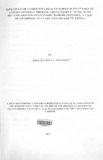| dc.description.abstract | The involvement of community health Workers (CHWs), in history has been in existence for the past 50years. In Thailand and the U.S, participation of trained workers was documented since 1950's and countries including Indonesia, India, Gambia and Kenya followed suit in engaging the CHWs, which has proven to be very effective especially in reaching out underserved population. One of the greatest challenges within the African health sector is the critical shortage of human resources, the average doctor to patient ratio across Africa is 1 :2000 and therefore CHW s became very critical in bridging the gap in terms of uptake of ART. The purpose of this study was to examine the influence of Community Health Workers on uptake of anti-retroviral therapy among people living with HIV and AIDS in Kawangware Location, Nairobi Province.
The study was guided by the following objectives: To establish the demographic characteristics of CHWs and uptake of ART, To investigate the level of training received by CHWs and uptake of ART, To determine how frequency of follow up of CHWs influence uptake of ART and finally To examine the extent to which activity reports influence the uptake of ART in the implementation of the Liverpool VCT project in Kawangware Location. Purposive sampling method was used in study. The study used questionnaire to collect data through face to face interview. Data was entered using SPSS for windows version 9.1 to generate frequencies and percentages.
The study found that demographic characteristics of the CHWs such as gender, level of education and age influenced uptake of ART among PLWHA, the study also discovered that activity reporting by CHWs, level of training undergone by the CHWs and frequency of follow-ups done by the community health workers influenced uptake of ART among People Living with HIV and AIDS. The study therefore concluded that the CHWs had an impact on the uptake of ARTs among persons living with HIV and AIDS. The study recommends that CHWs model be given much attention in ART program for PLWHA. From the research findings, it was clear that CHWs influenced the uptake of ART especially when CHWs had adequate training and therefore were able to follow up clients and document their activities.
The study revealed that adequate training, frequent follow-ups and documentation are very crucial in the implementation of LVCT project. Recommendations from the study revealed the need for a comparative study to look at CHW s working in other organizations to see whether different results can be generated. An in depth study to be carried out would suffice in order to get the perception of various groups including: People Living with HIV and AIDS and other stakeholders in the medical field. The study suggests that future researchers should do the same study in other areas such as in the rural areas, or in the Peri-urban areas for the purpose of comparison with the findings of the study. The study also recommends that future research should be done by organizations such as Millennium Villages Project in Siaya District for comparison purposes. | en_US |

